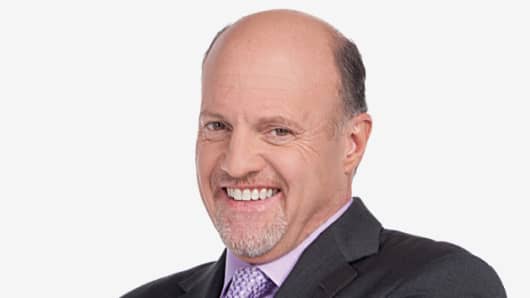From: Nicole Urken
Sent: Sunday, May 20, 2012 1:14 PM
To: James Cramer
Subject: Re: turnarounds
Sounds good- will do. Key for Pier One has been e-commerce focus, revamping of stores and technology enhancements … and cost savings
In the wake of the disastrous result in J. C. Penney’s first quarterly report after its unveiled “turnaround” strategy from newly minted CEO Ron Johnson, "Mad Money" parsed through a number of key retail turnaround stories that have worked. After all, while a retail turnaround is difficult to execute, it has been done. Notably, the improvements in Pier 1 Imports under CEO Alex Smith and Chico’s under CEO David Dyer contrast markedly with the initial dismal performance by JCP. Pier 1 and Chico’s are stand-out examples of names that were able to improve merchandising strategies to reinvigorate their respective brands while right-sizing the store base and cutting costs. Ultimately, key to the success of both names has been managing expectations with an acknowledgement that an overhaul from an underperforming base would take time. In contrast, JCP’s Ron Johnson ramped up expectations, set out very bold and very precise targets, and has missed the mark on effectively messaging the everyday low pricing hybrid strategy he is aiming to pull off.
These successful retail turnarounds are worth celebrating, along with other examples we have highlighted including Home Depot under CEO Frank Blake and Ascena Retail which diversified itself away from its Dress Barn core. Additionally, we have noted on "Mad Money" the merchandise genius of Mickey Drexler at , now private, and during the time he was at Gap during its swift rise during the 1990s — success that had been left in the dust until the company’s latest positive trends in recent months. Even Target is making some headway with its PFresh initiative and card loyalty programs.
While a turnaround is difficult in any sector, ultimately the retail sector lends itself more readily to more rapid shifts given the industry’s close alliance with consumer demands that are more fickle. While turnarounds in other sectors are also of course achievable, it is harder to play catch up vs. peers, particularly when dealing with enterprises and with more macro/global exposure.
Two tech names that reported this week — Dell and Hewlett-Packard — demonstrate how much harder a turnaround is to execute within the technology sector, for example. Ultimately, both Dell and H-P focused on their PC divisions much too long, not diversifying away early enough like IBM did to growth areas like software and services.
On "Mad Money," we have made note of Michael Dell’s valiant attempts to focus on more tuck-in acquisitions (after the hefty Perot Systems acquisition) while implementing cost cutting initiatives and focusing on non-PC growth. However, the company continues to struggle in this transition. Dell’s latest quarter was met with a severe sell off, as the company (which still has 65 percent revenue exposure to PC/Servers) has continues to suffer from weak demand and price competition.
H-P is still suffering from underinvestment during the tenure of former CEO Mark Hurd, who implemented a successful cost cutting strategy but starved the business of important focus shifts and R&D. While Hewlett’s stock shot up after its quarter, this largely was due to results that were better than feared (after all, the stock has been a dog) and a larger than expected restructuring plan including an announced cut of some 27,000 employees (about 8 percent of the workforce). Hewlett continues to suffer from mixed messages regarding its business units and leadership changes (from Hurd to Leo Apotheker to Meg Whitman) — and lack of clarity with lump results amidst a turnaround effort is not something worth applauding. Ultimately, while H-P showed some improvements in trends last quarter, its PC business still faces issues and its services focus remains a multi-year transition, especially given a restructuring plan that still has a number of question marks.
In the end, the tech winner of our era, Apple, has ultimately surged because of its unique focus on and connection to consumers. Despite recent weakness in the stock, it remains well positioned, particularly given its very attractive valuation.




